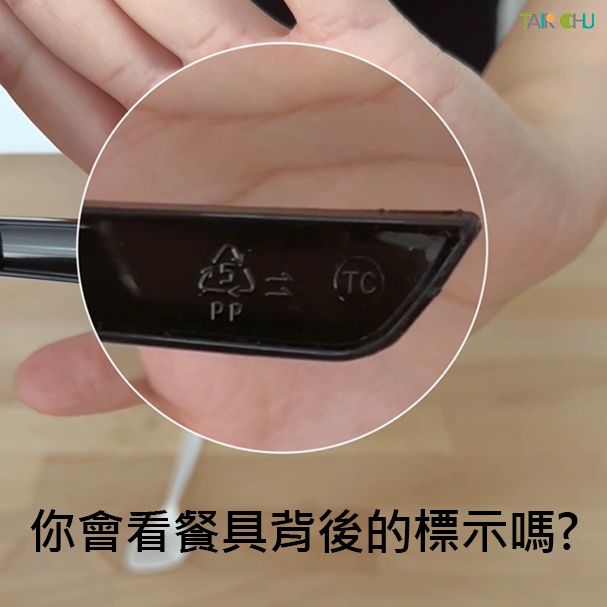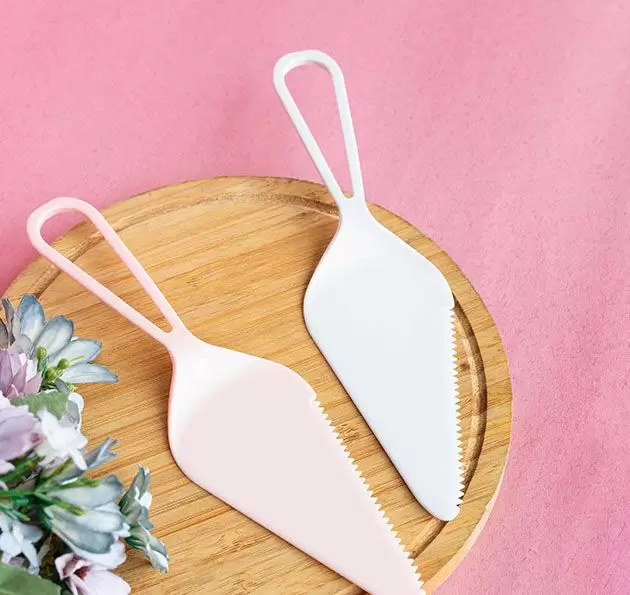What is #7 Plastic? What is #5 PP Plastic? With so many types of plastic materials, how can you tell them apart?
Are you using this plastic tableware in a safe environment? There are several types of plastic materials used for tableware on the market, and each material has unique characteristics. With just a few simple steps, you can quickly check what material your disposable tableware is made from!
After buying a bowl of hot soup, what's the first thing you do when you get the plastic cutlery from the owner?
Do you just grab the plastic spoon and scoop up the hot soup to drink?
No! No! No! That's completely wrong!
Before doing that, check what material the cutlery is made of, as exceeding the heat tolerance of plastic may release harmful substances!
Here's a simple guide to identifying common types of plastic cutlery materials
so we can safely use disposable cutlery in a safe environment 😉
⭐ Method 1: Check for the "Universal Recycling Code" on the cutlery
Disposable cutlery should always have a recycling code marked to ensure proper classification for recycling and reuse.
This is usually printed on the back or bottom of the cutlery.
These are some commonly used recycling codes on disposable cutlery:
- 5 - PP plastic: Heat resistant up to 120°C, flexible, and less likely to break. Usually used for higher temperature foods like baked dishes, hot meals, and hot soups.
- 6 - PS plastic: Heat resistant up to 60°C, harder material, usually suitable for ice cream, desserts, etc.
- 7 - Other plastic: Plastics that don't fall into categories 1-6 are classified as 7. It will often be marked as "7" or "other".
Tair Chu uses biodegradable plastics (corn starch-based PLA and CPLA), with PLA being heat resistant up to around 40°C and CPLA up to around 80°C.
⭐ Method 2: Knock on the cutlery
Can you determine the cutlery material by knocking on it? Yes!
If there's no visible label or the label is too small to read, you can easily identify the material using this simple method.
- PP cutlery: When knocked, PP plastic cutlery produces a deeper, heavier sound. (See video at 0:11)
- PS cutlery: PS plastic cutlery makes a sharper, clearer sound when knocked. (See video at 0:15)
⭐ Method 3: Bend the cutlery
- PP plastic cutlery has higher flexibility, so it's less likely to break. In addition to its higher heat resistance, which makes it suitable for hot meals and soups, many restaurants, cafes, and themed family restaurants choose this material for children's cutlery, ensuring better safety for kids dining in the restaurant.
- PS plastic cutlery is harder, and when you bend it, it feels stiff, and you may get a "fragile" feeling. This type is usually used for cakes, desserts, ice creams, etc. Additionally, PS material has higher transparency, so it can also be made into transparent cutlery.
Aside from the PS (#6) and PP (#5) plastic cutlery, the hardest to identify is #7 plastic!
As mentioned earlier, plastics that don't fall into categories 1-6 are classified as #7.
Plastic #7 includes various materials like:
- Polycarbonate (PC), used in baby bottles and water bottles
- Melamine resins, used for children's cutlery
- PLA/CPLA (Polylactic Acid), used for disposable cutlery
For Tair Chu's PLA/CPLA materials, these are what's often referred to as corn-based or eco-friendly disposable cutlery.
These two materials, like in the video with the hot water test, may look similar to other PS and PP cutlery.
The recycling code is often marked as #7 or "other" (Tair Chu labels it as "7 PLA").
The knock sound is similar to PS cutlery, producing a crisp sound.
Newly produced items, just like PS plastic cutlery, don't have much flexibility either.
So, most of the time, you need to check with your supplier or the cutlery provider to know the exact material!
Hope this simple knowledge helps everyone!
Now you can easily identify your cutlery material starting today 😊
Contact us:
Tel:+886-4-23350398
Address:No.80-18-1, Qingguang Rd., Wuri Dist., Taichung City 41462, Taiwan
What is #7 Plastic? What is #5 PP Plastic? With so many types of plastic materials, how can you tell them apart? | Custom Plastic Cutlery Design & Plastic Tableware Manufacturing | Tair Chu
Located inTaiwan since 1978, Tair Chu Enterprise Co, Ltd. has been a disposable plastic cutlery and plastic tableware manufacturer. Their main compostable plastic with cutlery and tablewares, include plastic cutlery, plastic spoon, plastic fork, plastic knife, plastic spork, ice cream spoon, cake fork and party cutlery, which have 3000 selections with eco-friendly certifications.
Tair Chu with more than 40 year experience in the plastic injection and food package industry accumulate solid experience in building customized products including plastic cutlery, food containers, drinking cups and lids. Tair Chu provides not only OEM tableware service but also our unique design tableware to our customers to give them edge over their competitors.
Tair Chu has been providing customers high-quality plastic flatware, cutlery and tableware products, both with advanced technology and 45 years of experience, Tair Chu ensures each customer's demands are met.


